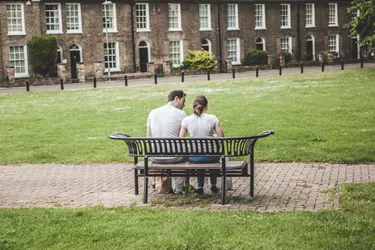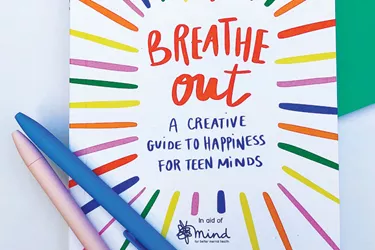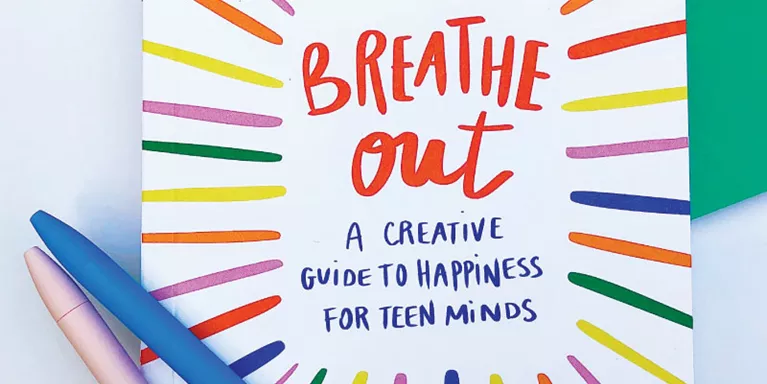A diary of mindfulness, week three - mindfulness of the breath
In the third of her series on mindfulness and depression, Clare blogs about the problem with trying to solve feelings with thoughts. She also describes a short meditation exercise that you can try.
I've been writing a diary of my experiences of an eight week Mindfulness Based Cognitive Therapy (MBCT) course. If you missed the last two posts, you can still catch up on week one 'automatic pilot' and week two 'automatic judgements'.
Week 3 - Mindfulness of the breath
As part of our homework from the previous session, we had to try to become more aware of pleasant events - recording at least one every day. We didn’t just have to record what the event was, but also our thoughts, emotions and bodily sensations while we were experiencing this event.
Although it sounds simple, it was actually a pretty new thing for me, making a real distinction in my experience between thoughts, emotions and bodily sensations. I think I found thoughts the easiest to identify, then emotions and lastly bodily sensations. This seemed to be the experience of most people - we are not very aware of how our body is feeling at any time.
Try it, next time you find yourself aware of a pleasant event. Of course, what mindfulness is doing is encouraging us to turn our focus from our thoughts and towards the feeling in the body in the moment.
Why? Well, this was explored further this week. During discussion, it seemed that a lot of the participants were frustrated, or sceptical about the body scan and other mindful activities - unclear how they were helping, or what impact they could have on long term relapse prevention. I still had my question from the previous week - if MBCT teaches that we are supposed to be accepting our situation without judgement, am I undermining this acceptance by trying to use MBCT to change my experience at all?
Using thoughts to try and solve feelings doesn’t work
The leaders of the course explained a bit more about the ideas MBCT is based on. As humans, we are used to ‘intellectual’ problem solving - using thoughts to move from a problem to a solution. However, the trouble comes when we try to use intellectual problem solving to approach an emotional problem, or to put it another way, to use thoughts to try and solve a feeling.
Trying to solve our moods through thinking leads to the rumination a lot of us are familiar with. Thoughts circle round in our heads, posing as questions which it is possible to answer. To add to this, we are often monitoring ourselves against unhelpful ‘standards’ of happiness that we set ourselves. We wake up feeling bad - and make it worse by comparing it in our thoughts to how we feel we should be. This leads to the vicious spiral of rumination - ‘Why am I feeling like this...I shouldn’t be...no one else struggles this much....maybe it’s because of this...I’m letting everyone down’ - as if, somehow, if we found the elusive ‘answer’, all would be fine.
It is using this verbal problem solving to try and approach and ‘solve’ emotions and moods which is unhelpful.
Instead, MBCT is trying to offer a different way of approaching an issue - moving away from the automatic intellectual need to solve things instantly. It encourages us to step back and in doing so, getting out of the thought patterns that lead to the rumination and the vicious spiral.
This helped me to understand my confusion. It was a particular type of ‘problem solving’ approach that was unhelpful, and in accepting how we feel in the moment without judgement we are stepping away from that approach. That isn’t to say we can’t change things, but not in an immediate way through this kind of problem solving. This is difficult, we are verbal problem solving beings when faced with the world at large (and confusing new courses!). It’s a big step change to try and ensure we are aware enough of our mind to stop ourselves from automatically approaching every mood and feeling this way. We started looking further at mindfulness of the breath as a particular help in these situations.

Mindfulness of the breath and body
We did the mindfulness of breath and body meditation at the beginning of this session. This was like the shorter mindfulness of breath exercise we did the week before, but extended to include becoming aware of bodily sensations as well.
We were also introduced to the three minute ‘breathing space’ - a shorter meditation to help us include mindfulness deep in our day to day lives. We were asked to do it at least three times a day. I decided to try and do one each time I made a cup of tea at work (so, as my colleagues will attest, many more than three times!). Something I have since found helpful is the Headspace app - which you can set to send you reminders throughout the day to take a mindful moment.
The ‘breathing space’ is made up of three parts - explained in our handouts from Segal, Williams and Teasdale - Mindfulness Based Cognitive Therapy for Depression pg 184;
1) Awareness - bring yourself into the present moment by deliberately adopting an upright posture. If you can, close your eyes. Then ask - ‘What is my experience right now, in thoughts, in feelings and in bodily sensations?’. Acknowledge and register this experience, even if it isn’t one that you want.
2) Gathering - Redirect your attention to your breathing, to each in and out breath as they come. Your breath can work as an anchor to bring you into the present and help you become more aware.
3) Expanding - Expand your awareness so you get a sense of your body as a whole and stay like this as best you can for a minute or so”
So how does the breathing space meditation help with what we discussed above?
Firstly, it brings your attention to the present and stops you thinking about the past or worrying about the future - that rumination that can so easily lead to a negative spiral. Secondly, it actually takes up thinking space. If we are spending time trying to be aware of our breath, we are not ruminating and worrying as much. Thirdly, when our mind wanders, and we bring it back to our breath we are getting practice in recognising that our mind has wandered into thoughts, and practice in ‘changing gear’ back to being aware of the breath.
Even if when we practice, we are only bringing our mind back to the breath from thoughts about what’s for tea, this trains us to get more skilful at doing it when we do have more difficult and intrusive thoughts. Through the breathing space, we get better at stepping out of that automatic pilot mode and reconnecting with what is happening in the present moment.
Recognition and ‘stepping out of the stream’
To me, it feels like this recognition is one of the most important parts. In recognising my mind had wandered into thoughts or emotions, I felt like I was gaining some perspective on my thoughts - and seeing them just as thoughts or moods, and not as reality.
I always imagine it like a stream - it’s easy to get stuck in the stream, bogged down and washed away by the endless tumult (and gentle flow when we’re lucky) of thoughts and feelings. Doing a mindfulness of the breath meditation helped me to mentally step onto the bank.
My thoughts and feelings were still there, but my focus became trying to stay aware of the bank, my anchor, and letting the thoughts and feelings flow past without becoming too engaged with them. I think the hardest part is, when a difficult thought or feeling comes along, not to get sucked back in but instead to recognise it - ‘I’m judging myself now...there goes that thought about not being good enough...here’s a bit of frustration’ - and then return to the breath (the bank) without following the thought any further down the stream.
I quite like my metaphor, but I read a more beautiful one in the Segal, Williams and Teasdale book:
"Some instructors picture the mind as being like a vast clear sky. All our feelings, thoughts and sensations are like the weather that passes through, without affecting the nature of the sky itself. The clouds, wind, snows and rainbows come and go, but the sky is always simply itself, as it were a ‘container’ for these passing phenomena.
"We practice to let our minds be that sky, and to let all these mental and physical phenomena arise and vanish like the changing weather. In this way, our minds can remain balanced and centred, without getting swept away in the drama of every passing storm."
This week, for homework, as well as a 30 minute mindfulness of breath and body meditation, mindful walking and at least three three minute ‘breathing space’ meditations each day, we had to keep a record of both one pleasant and one unpleasant event each day. My first thought was that it would be interesting to see if it would be any easier to pull apart the thoughts, emotions and bodily sensations associated with unpleasant experiences.
Over the past few weeks, we’d been practicing and developing our capacity for awareness and mindfulness through the meditation, discussions and homework. We were learning, slowly, to step out of the stream and onto the bank.
Next week we’d look closer at what comes next - something the course describes as 'being with our experience' or 'staying present'. This would include further exploration of the vicious cycle of depression and help recognising the negative automatic thoughts that are symptoms of the illness.


Information and support
When you’re living with a mental health problem, or supporting someone who is, having access to the right information - about a condition, treatment options, or practical issues - is vital. Visit our information pages to find out more.
Share your story with others
Blogs and stories can show that people with mental health problems are cared about, understood and listened to. We can use it to challenge the status quo and change attitudes.

















